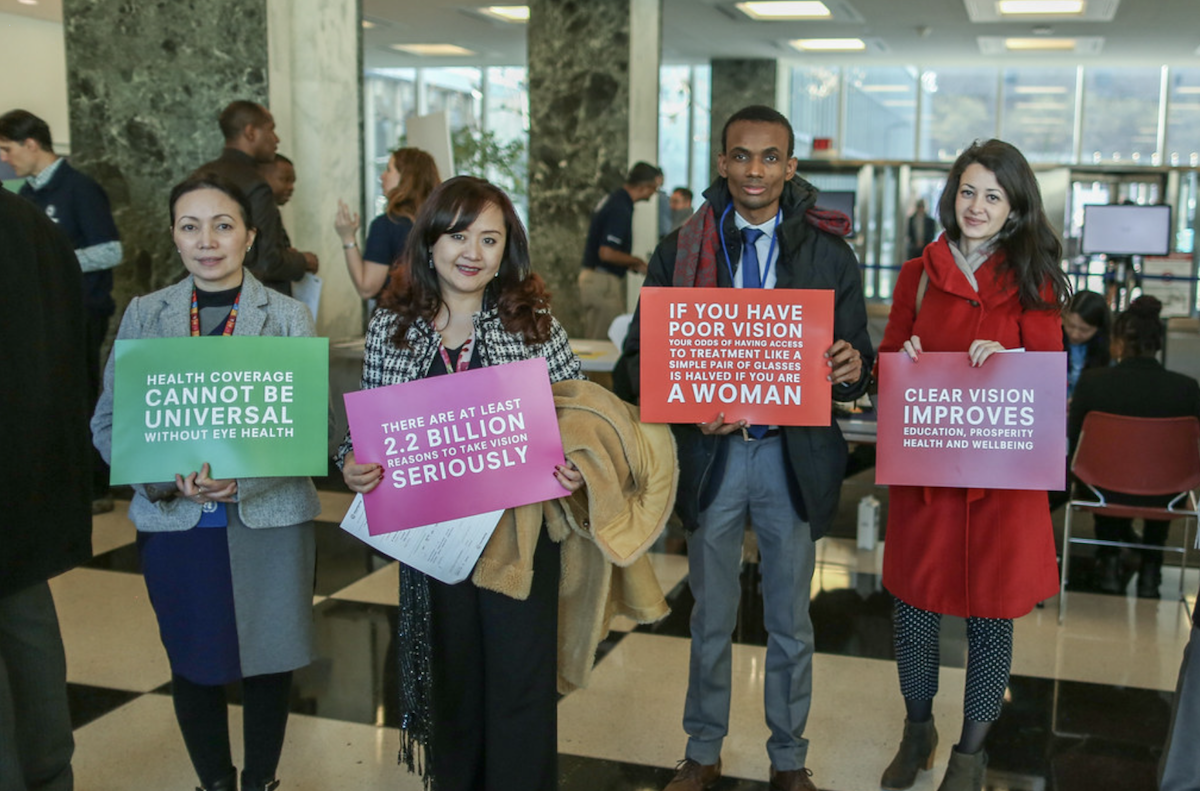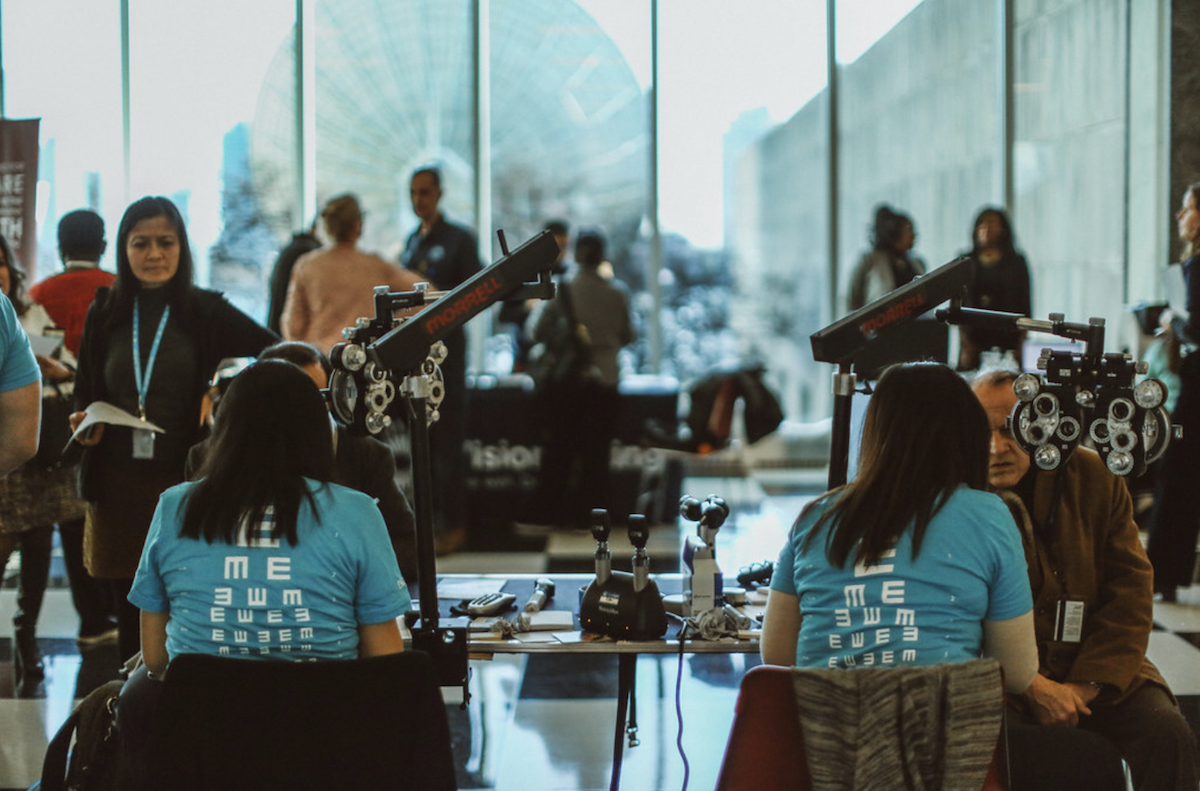
This November, OneSight’s President and Executive Director, KT Overbey, and Engagement Manager, Jenni Eilers, gathered at the United Nations headquarters for the WHO World Report on Vision launch. Attendees of the event included members from IAPB, SightSavers, Fred Hollows Foundation, Vision Spring, and Clearly- all of whom are now a part of the UN Friends of Vision group which was formed in the fall of 2018.
The event marked the launch of an important new world report created by the World Health Organization. The report uncovers the striking reality of global vision care — that 2.2 billion people worldwide have vision impairment or blindness, and of that 1 billion lack access to the care they need. Some other findings of the report include:
- Eye conditions and vision impairment is often far greater in people living in rural areas, people with low incomes, women, older people, people with disabilities, ethnic minorities, indigenous populations
- Rates of cataract and trachomatous trichiasis are higher among women, particularly in low- and middle-income countries
- Due to weak or poorly integrated eye care services, many people lack access to routine checks that can detect conditions and lead to the delivery of appropriate preventive care or treatment
The release of this information is a huge milestone for the vision care industry. It’s the first time the World Health Organization has developed a World Report on Vision – which revealed that ageing populations, changing lifestyles and limited access to eye care (particularly in low and middle income countries) are the main drivers in the rising number of people living with vision impairment. With numbers on the rise, it’s estimated that billions of USD would be needed to address the backlog of people currently living with vision impairment or blindness.

The report is meant to be directed at the ministries of health, development agencies, civil society organizations and researchers, practitioners and policy-makers from the field of eye care. By shaping the global agenda on vision, it is hoped that this will help Member States in their efforts to reduce the burden of eye conditions and vision loss and achieve the Sustainable Development Goals (SDGs), particularly SDG target 3.8 on universal health coverage.
While the content of the report may seem daunting on a global-scale, the findings provide the best available evidence on the magnitude of eye conditions and vision impairment, notes the progress that’s been made thus far and explains the remaining challenges facing the eye care sector. Perhaps most importantly, the report outlines what actions are needed to promote real change and how we can achieve a world with access to vision care.
This publication is one that has the power to spark real change in the eye care sector, prompting industry leaders, partners and multiple levels of government alike to take action. And rooted in that promotion of action lies hope. Hope for a world where location, background or economic status does not act as a barrier to clear sight. This is a step in the right direction for our world, and a leap towards a future everyone can see.
Interested in learning more? Read the World Health Organization’s World Report on Vision here.
Follow us on Instagram, Facebook, Twitter and LinkedIn for more stories of sight.
Photos By: Peter Crosby